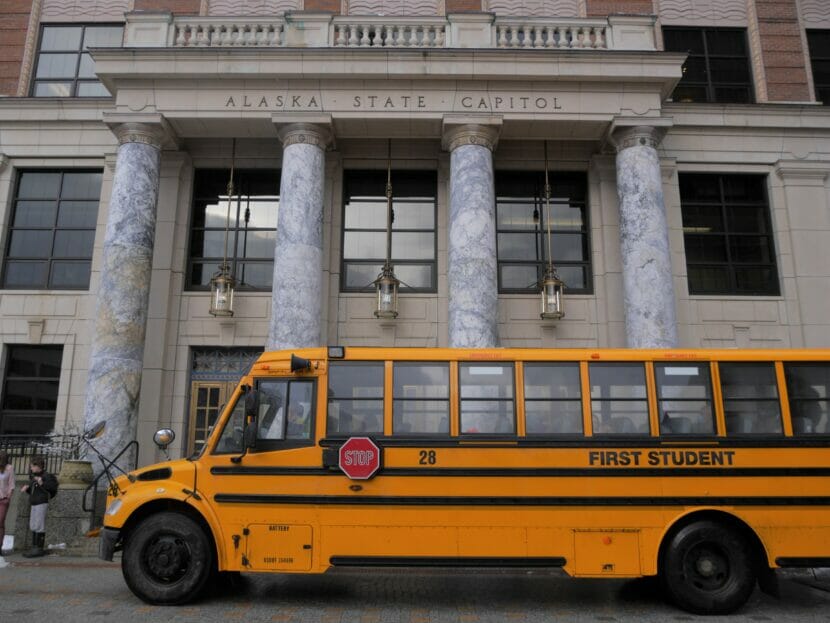State lawmakers got some perspective on a COVID-related education funding dispute between Alaska and the federal government on Wednesday.
On March 27, the U.S. Department of Education called on Alaska to send nearly $30 million to four urban school districts. The agency said the state had failed to abide by conditions placed on public school aid dollars included in a 2021 COVID relief bill. Federal officials warned that the state would be designated a “high-risk” grantee, which could come with new restrictions on federal funds in the future.
The dispute all boils down to an obscure, first-of-its-kind requirement on the more than $350 million Alaska received from that bill, the American Rescue Plan Act. It’s called “maintenance of equity.” The idea was to make sure schools serving low-income students weren’t underfunded.
In early 2021, the pandemic was raging, and wide access to vaccines was still months away. Drafters of the bill were afraid states would slash education budgets if state revenue fell sharply, said Austin Reid, a federal policy advisor with the National Conference of State Legislatures who has followed the provision closely.
“Congressional staff wanted to create a backstop to provide additional protections to education funding in districts that serve relatively larger populations of low income students,” Reid told the Senate Education Committee on Wednesday.
Basically, as Reid told it, maintenance of equity was supposed to make sure that if a state cut education funding, low-income districts wouldn’t suffer a sharper drop in state revenue than those serving higher-income students.
But shortly after the passage of the American Rescue Plan came a surprise, Reid said. A guidance document from the Department of Education released a few months later told states that the maintenance of equity provisions would apply whether or not states cut education spending.
“This was a major update,” he said. “To my eyes, and some others, a plain language reading of the law supported the interpretation that maintenance of equity only applied in instances where state education budgets were cut.”
And that’s more or less the same argument Alaska’s education department is making: the state didn’t cut the money it sends to school districts through its funding formula. In a letter, Education Commissioner Deena Bishop said she plans to challenge the “high-risk” grantee designation in the coming days.
Ahead of the March 27 letter deeming Alaska a high-risk grantee, Bishop threatened a constitutional lawsuit, saying it appeared that the Education Department’s guidance changed the meaning of the law.
Though Reid said more than 40 states were initially deemed out of compliance, Alaska is the only state that has not resolved the dispute.
The chair of the Senate Education Committee, Löki Tobin, D-Anchorage, said lawmakers would examine all of their options.






